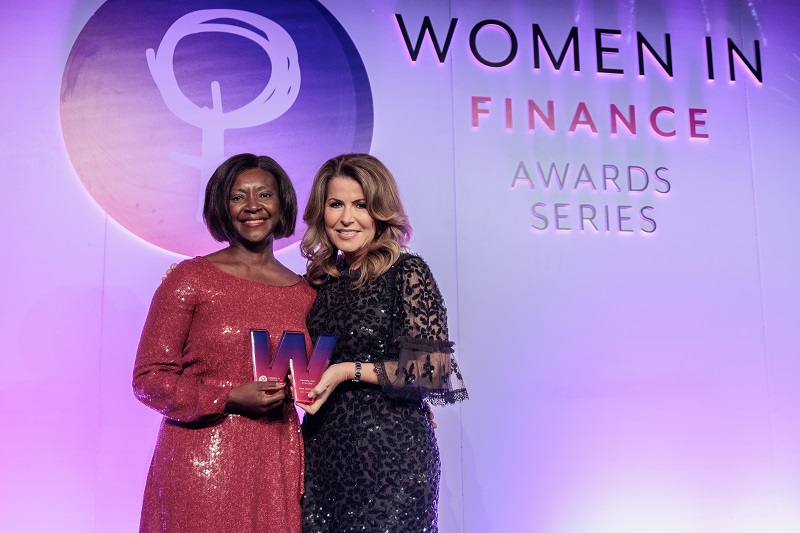Women working in STEM report that their contributions are often ignored; they experience isolation caused by a lack of access to women peers, role models, and mentors; and they are paid less than their male co-workers.
Catalyst research also found that women leave STEM careers at disproportionately higher rates than men, particularly among those who are working parents.
It’s no surprise then that averaged across regions globally, women accounted for less than a third (29.3%) of those employed in scientific research and development (R&D) across the world in 2016; and women of colour were a smaller piece of the pie still, for instance in the United States accounting for only 11.5% of science and engineering employees.
The treatment of people of colour has been brought into sharp focus in recent months by the murder of George Floyd and the resulting global protests against racism. Companies are looking to put their own houses in order and analyse their organisations through the lens of diversity, equity, and inclusion.
But addressing race – and gender – in the workplace is not enough. Leaders must pay attention to intersectionality.
First coined by legal scholar Kimberlé Crenshaw in 1989, intersectionality is a framework for understanding how social identities, such as gender, race, ethnicity, social class, religion, sexual orientation, and gender identity, overlap with one another and with systems of power that oppress and advantage people in the workplace and broader community.
For example, when looking at the gender pay gap, between men and women, the disparity is even wider for women of colour, but the gender wage gap also increases as women age.
When companies fail to acknowledge intersectional identities in the workplace, they dismiss a part of a person’s identity, which informs their experiences. For instance, when women of colour were asked where they would be most likely to experience racism, they said in the workplace.
Despite this, people of colour remain ambitious. A recent study of 24,000 UK employees, by Business in the Community (BITC), found that 74 per cent of black respondents wanted to progress in their careers, compared to 42 per cent of white respondents. However, a third of black respondents (33 per cent) remarked that their ethnicity would be a barrier to their next career move, compared to just 1 per cent of white respondents.
Catalyst’s research has also found that women of colour are ambitious, with 90% saying they want to be leaders with influence, hold intellectually stimulating jobs and advance to higher positions, yet almost 60% said they experienced an “emotional tax” in the workplace. Emotional Tax or undue burden is levied on many people of colour – specifically those who identify with Asian, Black, Latin-American, and multiracial backgrounds – as a result of unfair treatment. It keeps them on guard in the workplace, anticipating potential acts of bias or discrimination. People across intersections of race, ethnicity, gender, and other aspects of identity are also vulnerable to these risks.
Emotional tax affects mental wellbeing, physical health and careers and can lead to many leaving their jobs if they do not feel their identities and unique challenges are being addressed. For example, we found that 50% – 69% of Black, East Asian, and South Asian professionals in Canada who are highly on guard against bias have a high intent to leave their companies. This haemorrhaging of talent should be a major concern for organisations keen to leverage a diverse workforce.
A 2020 UK study of women STEM students and recent graduates also finds that the gender balance of a company would be an influencing factor for over half (54%) when deciding on a job offer, and 65% of female STEM students would expect to read the gender pay gap report before accepting a job.
From a business perspective, companies need to be aware of how they can become an employer of choice for top talent, as well as ensure that they maintain driven and committed employees.
Organisational strategies to recruit, retain, and advance women in STEM occupations can help address these issues. Catalyst recommends several ways to create a more inclusive environment and reduce the emotional tax felt by people of colour.
Leaders must also foster a sense of psychological safety so that their employees feel supported, are able to take risks without penalty or fear of repercussions and can suggest new ideas or even discuss difficult topics. Difficult conversations can make people feel uncomfortable, but it is important that safe spaces are created to allow open conversations on important topics.
To address intersectionality further, we need data on intersecting identities such as gay women of colour, people of differing abilities, older individuals etc. Companies should use data to propel change in their organisations.
STEM industries have experienced rapid growth in the 21st century, far outstripping other industries and diversity, equity and inclusion are critical to innovation and maximising the bottom line. Organisations wishing to lead the IT industry must take action to become employers of choice for high-potential women, keeping intersectionality at the forefront to dismantle barriers and oppressive systems of power, which hold women back.
By Rikia Birindelli-Fayne, Senior Director, Diversity, Equity and Inclusion, EMEA, at Catalyst Inc.
You can hear more from Rikia at the Women in IT Virtual Summit, Europe on 15th September. You can view the agenda and register your free place here.









